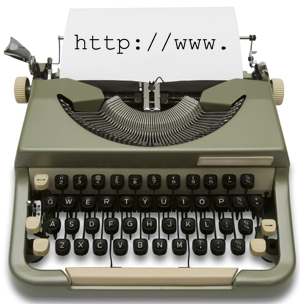 Mention the iPhone to most people and their first thought probably has something to do with Twitter and texting teens. But then, most people are not Anne Cymet. A self-professed early adopter, Anne's iPhone is never far from reach during the workday. In fact, it's central to her practice as an RN in the TWH Lupus Clinic, where it's become both a reference tool for her and a key ingredient in patient education.
Mention the iPhone to most people and their first thought probably has something to do with Twitter and texting teens. But then, most people are not Anne Cymet. A self-professed early adopter, Anne's iPhone is never far from reach during the workday. In fact, it's central to her practice as an RN in the TWH Lupus Clinic, where it's become both a reference tool for her and a key ingredient in patient education.
She has a fairly young patient population, who are generally between 18 and 35 years old. They're a tech-savvy group, and eventually Anne figured out that it made sense to go where her patients are. She laughs at the reactions she occasionally gets—"Sometimes I get this shocked look that I'm too old. But they're appreciative of the fact that I'm willing to work with the technology. They don't expect someone in my role to be tech-savvy."
Smartphones use apps—that is, mini-applications—that are designed for specific tasks or functions. Anne has 28 apps on her phone that she uses for work. That may sound like a lot, but it's just a fraction of what's available for the iPhone and other smartphones. For every need, there are countless apps to choose from. So how
to decide? Anne has a vetting process for each app before she incorporates it into practice. Part of that is checking who puts out the app, but she also tests it for a while before making a decision. Some are obvious, like apps by the Registered Nurses' Association of Ontario or the New England Journal of Medicine, and others less so.
But what does she actually do with all these apps? Anne divides her apps into tools for her own practice and those for patient education. Many replace traditional reference tools like textbooks and websites. She values having information at her fingertips at all times—"You can't always remember everything… but I don't have to carry textbooks around or bits of paper in my lab coat," she says.
She can also recommend credible sources of information to her patients, whether they're looking for health info online or apps to download about their illness—a scenario that's familiar to any health care professional in the age of Google.
"If patients have a phone," she says, "I'll go over the apps and information with them and explain how to evaluate whether the information is accurate. Because it's scary, what patients will find."
For instance, she can quickly access nutritional info through iFastFood, to give patients a snapshot of their eating habits. One of her most effective tools is Heart Risk, which assesses risk factors for heart disease—patients can watch their risk go up and down as they adjust factors. Seeing the red and green bars on the screen change as patients learn how their risk would change if, say, they were to quit smoking immediately, always makes an impact.
The obvious question is how many patients actually carry iPhones. Anne says she's constantly surprised—about 75% of her patients are carrying smartphones, and of that group, about 75% have iPhones. Her most useful app is a pharmacy one that includes an extensive database of pill images. In ambulatory care, patients are regularly asked about the medications they take, but frequently have trouble recalling exact names or dosages. Having images to show the patient, who can then confirm exactly which purple pill it is that they're taking, is invaluable—one more step towards getting the most accurate information possible about their health condition. Nor does she herself always recall every detail of a particular drug a patient may tell her about, which is where, once again, the app comes in handy.
It's easy to brush off smartphones as frivolous distractions, but Anne argues that it's a more patient-friendly, or even patient-centred, approach. She doesn't have to leave the bedside to find information for her patients, which means she's ultimately spending more time with the patient. If anything, she feels that we're missing out on a huge part of the value of smartphones, which we tend to think of primarily as tools for social media and communication. But it can also be a powerful medical tool, when used wisely, and especially as more reputable medical organizations start developing their own apps.
_______________________________________________________________________________________________
Yes, there's an app for that…
Some of the apps Annes uses on a daily basis:
FRAX – measures patient's risk of fracture
RNAO – Nursing Best Practice Guidelines
Mediquations – Medical calculator with 230 formulas
Epocrates – Pill identification and drug interactions
SkyScape – Includes drug and clinical info, journal summaries, clinical trial results
Heart Risk – Calculates heart disease risk factors
PillBox – Track medication dosage and frequency
iFastFood – nutritional breakdown for major fast food chains
